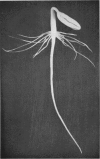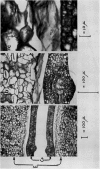Abstract
Changes in the dry weights of various parts of the castor bean seedling showed that the rates of transfer of material through the cotyledons to the embryonic axis exceeded 2 mg/hour after 5 to 6 days of germination. The sugar present in the endosperm was predominantly, and in the cotyledon almost exclusively, sucrose. Anatomical features were described which contribute to the efficiency of the cotyledons as organs of absorption and transmittal of sucrose to the embryonic axis, where hexoses are much more prevalent.
The ability of the cotyledons to absorb sucrose survived removal of the endosperm from the seedling. A series of experiments is described in which the cotyledons of such excised seedlings were immersed in sucrose-14C and measurements made of uptake and of translocation to various parts of the seedling. Increasing rates of absorption were observed as the sucrose concentration was raised to 0.5 m and these rates were maintained for several hours. Removal of the embryonic axis (hypocotyl plus roots) drastically altered both the response to sucrose concentration and the time course of absorption by the cotyledons.
More than 80% of the sugar normally entering the cotyledons from the endosperm is transmitted to the embryonic axis and this extensive turnover was seen also in pulse/chase experiments with excised seedlings. The cotyledons of excised seedlings absorbed sucrose against high apparent concentration gradients. The absorption was stimulated by phosphate and had a pH optimum at about pH 6.4. It was inhibited by arsenate, azide and 2,4-dinitrophenol.
Full text
PDF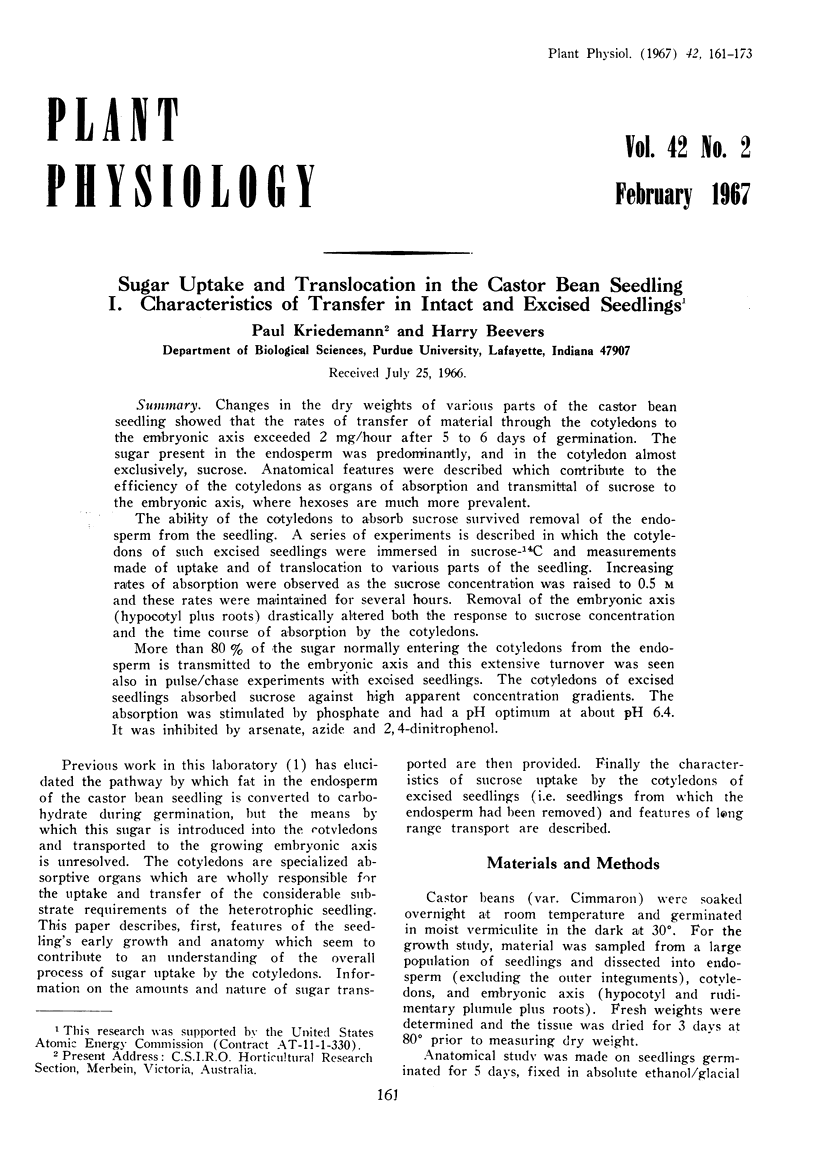

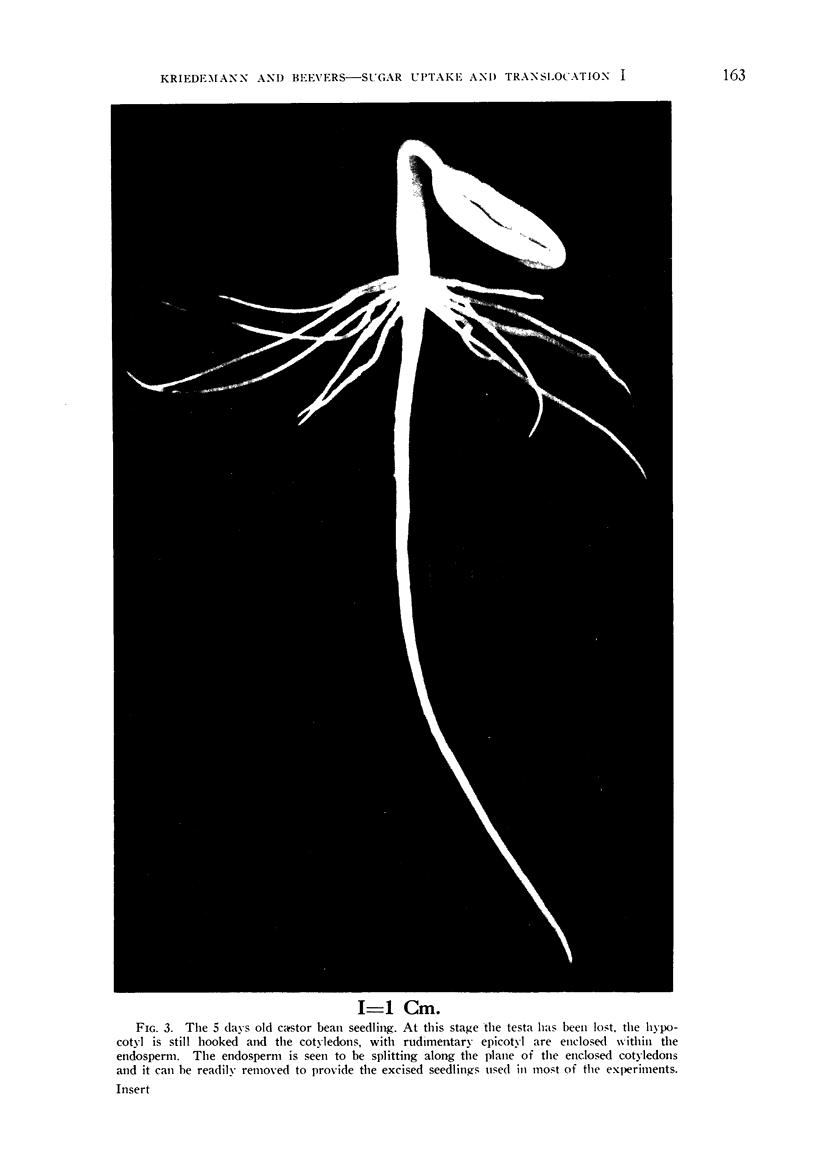
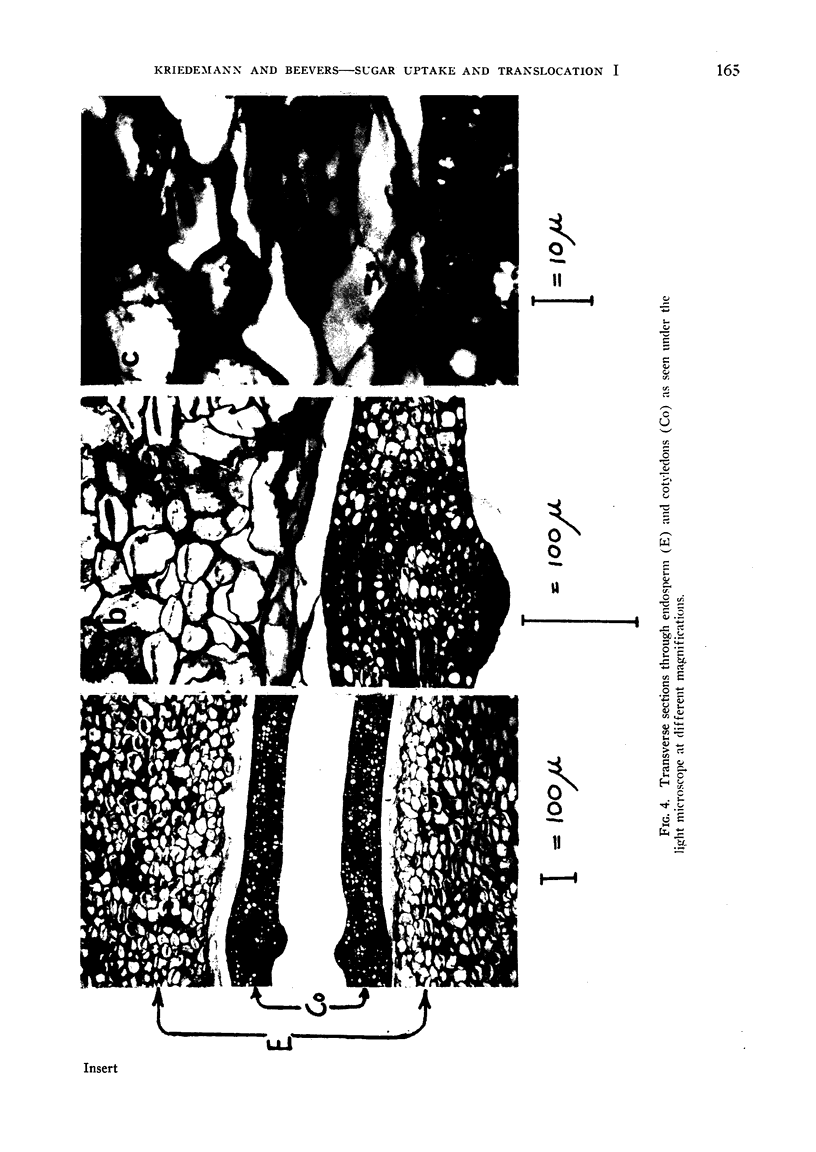
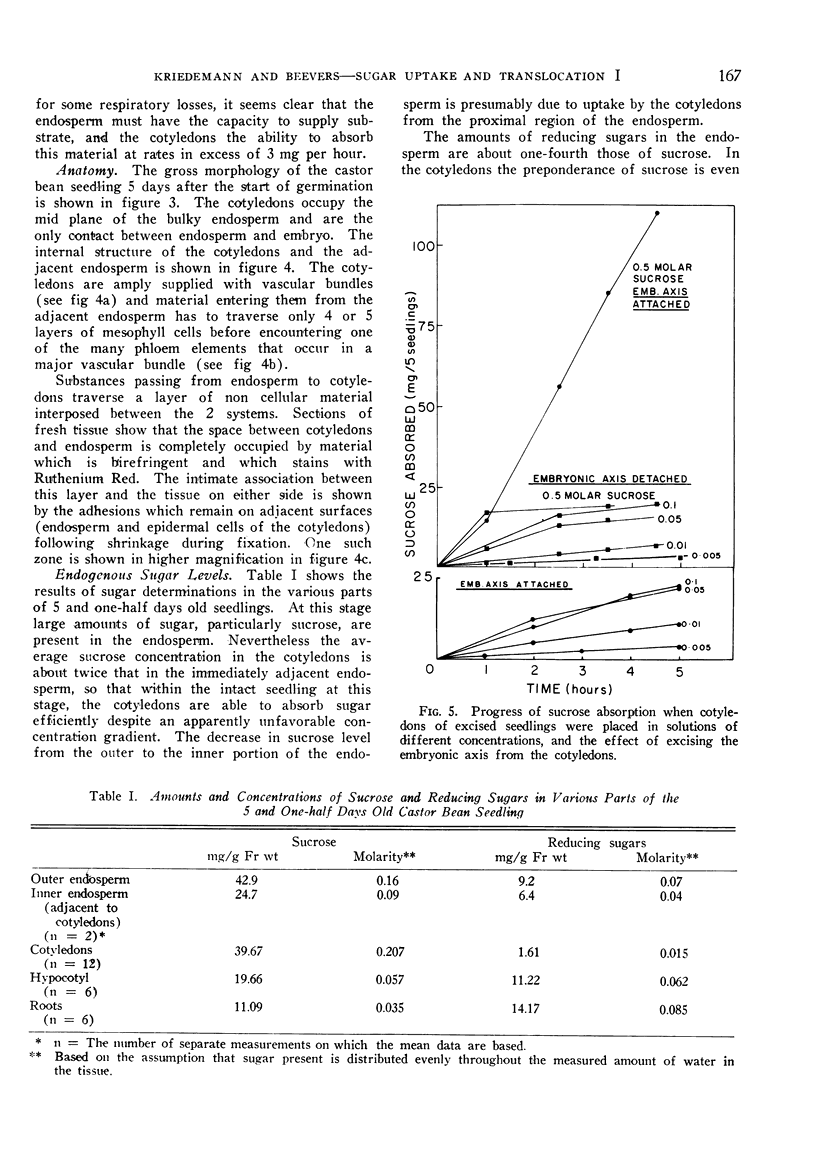
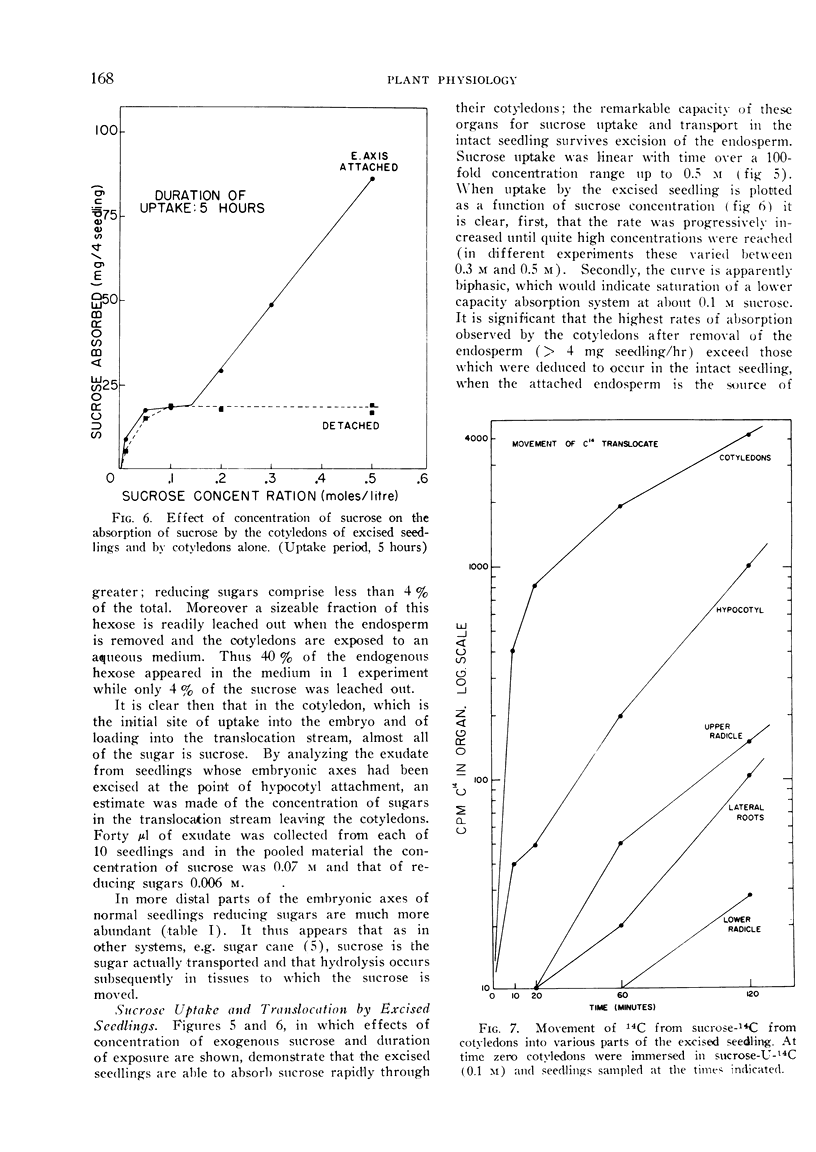


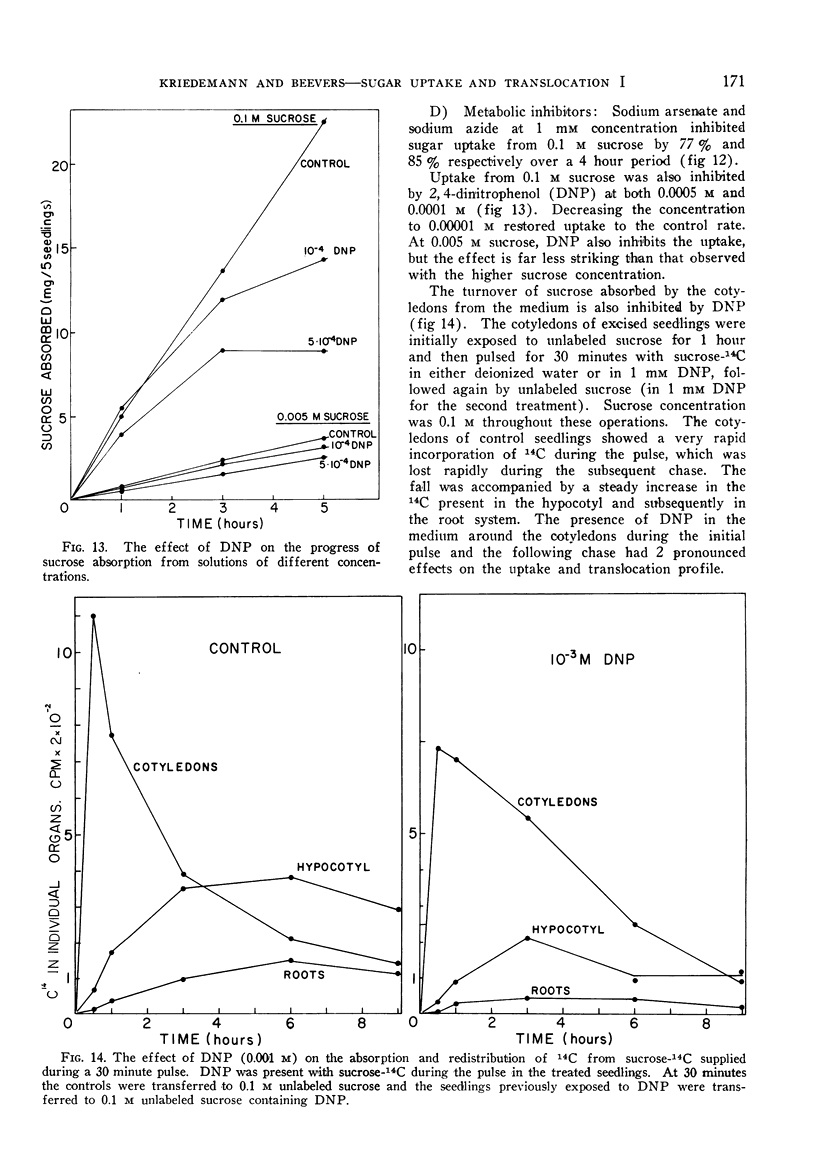
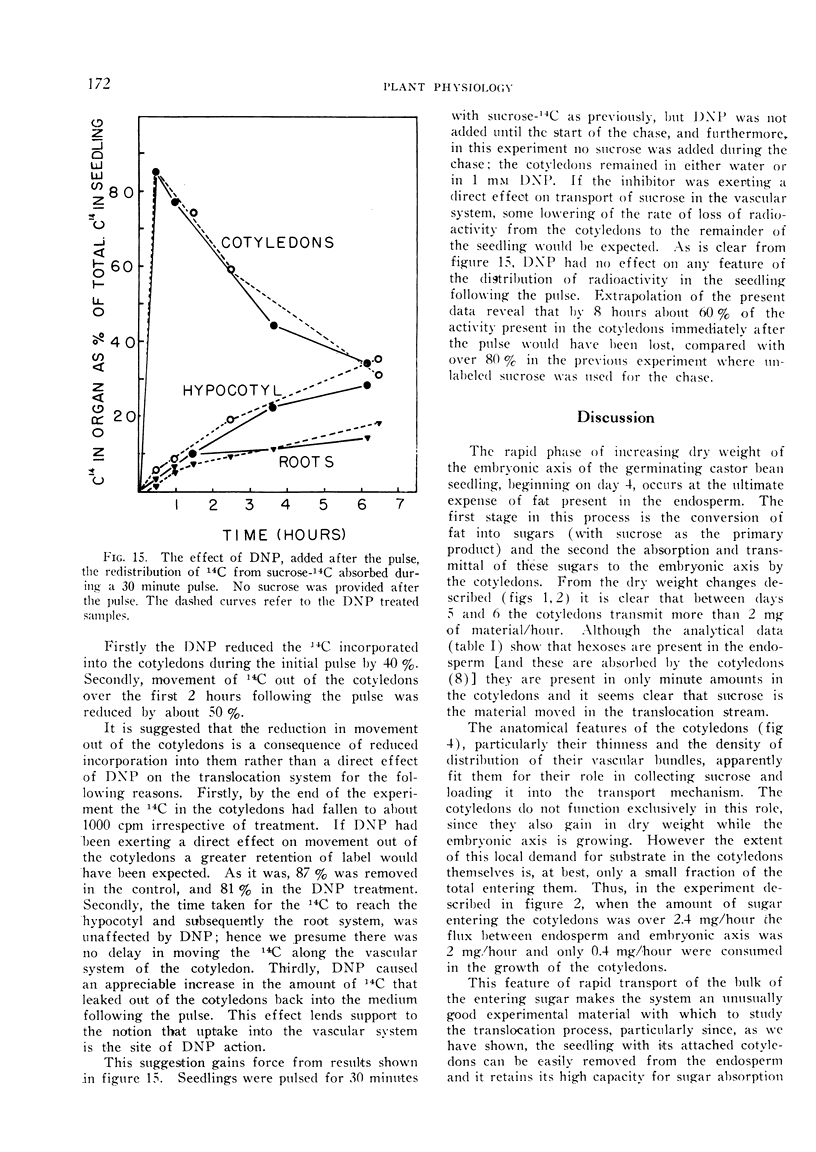

Images in this article
Selected References
These references are in PubMed. This may not be the complete list of references from this article.
- BEEVERS H. Metabolic production of sucrose from fat. Nature. 1961 Jul 29;191:433–436. doi: 10.1038/191433a0. [DOI] [PubMed] [Google Scholar]
- Clauss H., Mortimer D. C., Gorham P. R. Time-course Study of Translocation of Products of Photosynthesis in Soybean Plants. Plant Physiol. 1964 Mar;39(2):269–273. doi: 10.1104/pp.39.2.269. [DOI] [PMC free article] [PubMed] [Google Scholar]
- Hartt C. E., Kortschak H. P., Forbes A. J., Burr G. O. Translocation of C in Sugarcane. Plant Physiol. 1963 May;38(3):305–318. doi: 10.1104/pp.38.3.305. [DOI] [PMC free article] [PubMed] [Google Scholar]
- Hatch M. D., Glasziou K. T. Direct Evidence for Translocation of Sucrose in Sugarcane Leaves and Stems. Plant Physiol. 1964 Mar;39(2):180–184. doi: 10.1104/pp.39.2.180. [DOI] [PMC free article] [PubMed] [Google Scholar]
- Kriedemann P., Beevers H. Sugar Uptake and Translocation in the Castor Bean Seedling II. Sugar Transformations During Uptake. Plant Physiol. 1967 Feb;42(2):174–180. doi: 10.1104/pp.42.2.174. [DOI] [PMC free article] [PubMed] [Google Scholar]
- Webb J. A., Gorham P. R. Translocation of Photosynthetically Assimilated C in Straight-Necked Squash. Plant Physiol. 1964 Jul;39(4):663–672. doi: 10.1104/pp.39.4.663. [DOI] [PMC free article] [PubMed] [Google Scholar]



